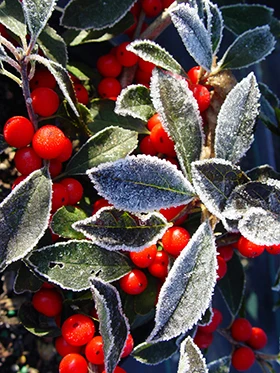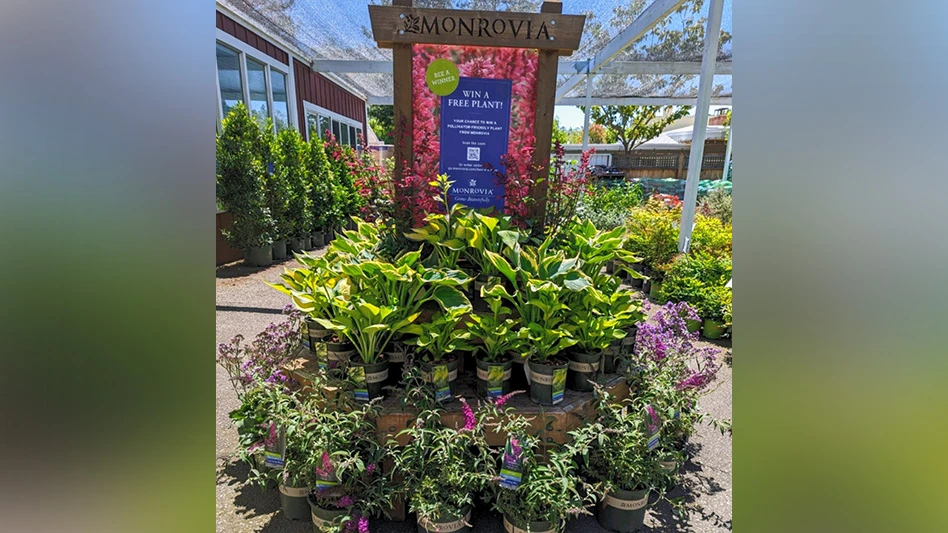
 Clearly, there is a lot of enthusiasm for native plants for landscaping. While native plant use has grown over the last decade, the pace of increase has seemed to lag behind the apparent rise in interest. So what are some of the things holding back a stampede of natives into our gardens?
Clearly, there is a lot of enthusiasm for native plants for landscaping. While native plant use has grown over the last decade, the pace of increase has seemed to lag behind the apparent rise in interest. So what are some of the things holding back a stampede of natives into our gardens?
The production side of the equation
One major hold up on the production side of things is that growers do not approach native production with the same quality control as they do with mainstream nursery plants. On more than one occasion I’ve heard it said that “it’s okay if a native plant looks “wild” – meaning ratty or unkempt – because that’s what people expect them to look like.” But people don’t buy ratty-looking plants for the yard. They buy good looking plants with dense canopies that fill the container. If native plants are going to sell then they have to be of the same caliber and quality as any other nursery plant.
What probably happens in production is that natives are the last plants to get attention, and important cultural practices, such as pruning and container spacing, are done too late or not at all. For example, in 2010 I received #2 containers of northern bush honeysuckle (Diervilla lonicera), a little known native that is beginning to experience more use. These plants were grown too close together in the nursery and were more upright and leggy in appearance than is typical for this plant. They would not have sold well at the garden center. In 2012 I also received plants of this species, and this time they looked really good because they had been pruned and spaced appropriately. Clearly this demonstrates that natives can be grown to the same level of quality as mainstream crops, like hydrangea or pieris, but it is not happening quickly enough.
One reason why natives do not get the attention they need during production, is that information about optimal growing conditions is not always known. Furthermore, it may be necessary for some native species — especially lesser-known species — to develop alternative nursery production practices. It may not be possible to grow high quality American filbert (Corylus americana) plants using a standard nursery mix like that used for forsythia. Some natives may require adjustments to container mix, production scheduling, pruning, shading and fertility, and nursery producers are certainly capable of adjusting protocol to suit particular crops including natives. An example of how growers have tweaked production for a special need by a native is with Mountain Laurel (Kalmia latifolia). By altering container media and fertility practices, growers are now able to produce stellar-looking mountain laurel. At the University of Connecticut I am working to develop propagation and production protocols for under-utilized native shrub species, some of which have not seen the light of day in production. For these species we don’t know how to propagate, overwinter and prune, or what media and shading and fertility level is appropriate, or what pot size will work best. But stay tuned to find out.
A need for native cultivars (aka nativars)
The most successful commercial nursery plants are cultivars or selections of a species with superior ornamental characteristics. Cultivars must be propagated asexually to preserve the desirable traits, and the vegetative propagules are referred to as clones. With vegetative propagation, growers have the ability to produce a very uniform crop, which is often important for landscape design. Only a small percentage of mainstream crops are not propagated asexually because vegetative propagation is not possible for one reason or another. Instead they are propagated sexually from seed, which frequently results in a non-uniform crop.
The uniformity that comes from vegetative propagation is one aspect of what is needed to transform underutilized native plants into sought after commercial products. I experienced first hand the problems that come with native material produced from seed. In my work to evaluate landscape suitability of under utilized native shrubs I received seed propagated material of American filbert (Corylus americana), buttonbush (Cephalanthus occidentalis) and steeplebush (Spiraea tomentosa). Plants exhibited significant differences in appearance and performance right from the start. I evaluated the plants in the landscape over three years and noted differences in traits such as leaf shape and color, plant size, density of habit and flower production. Some individual plants were stellar performers and others fell short, but the lack of uniformity in the seedling grown material left me longing for cutting propagated plants. I also evaluated plants of sweet fern (Comptonia peregrina), sweet gale (Myrica gale) and northern bush honeysuckle (Diervilla lonicera) that were propagated asexually. These species were uniform and produced a more desirable landscape effect.
As I mentioned, there is a mindset that people expect natives to look wild or unkempt, and while this may be true, wild looking plants will not sell at a commercial level. If growers want to profit from sales of native plants, then they must consistently produce plants with dense canopies that uniformly fill the container and look nice and neat on the garden center display. To achieve this, growers must seek to use improved forms of native species. There is a broad palette of improved forms of the native shrubs winterberry holly (Ilex verticillata) and summersweet (Clethra alnifolia). For example, when consumers buy a winterberry holly at the garden center they don’t buy an unnamed seedling plant, they buy improved forms such as ‘Red Sprite,’ ‘Winter Red’ or ‘Jim Dandy.’ Similarly consumers are buying ‘Ruby Spice,’ ‘Hummingbird’ and ‘Sixteen Candles’ summersweet and not plain old seedlings.
 Surveys say: not enough plants, not enough information
Surveys say: not enough plants, not enough information
A grower does not want to go out on a limb and produce a ton of something that they feel they cannot sell or people have not been requesting. But, if growers do not offer a broad palette of natives, then natives are not going to gain momentum. Furthermore, growers need to train their sales staff on native species availability and how natives can be used in the landscape.
With familiar garden plants like forsythia, hydrangea and lilac, consumers believe they know how to use them and so they feel confident in buying them.
Consumers tend to shy away from native species because they are less familiar with natives and do not see them in the neighbors’ yard. The same goes for landscape designers, who often have a set list of proven plants they go to over and over again.
For the native market to grow, information developed through research about how to use native plants appropriately in landscapes must be provided to sales staff, landscape designers and consumers.
Some growers have already begun to do this. The American Beauties Native Plants brand uses dynamic displays showcasing their plants at events such as wholesale trade shows and prints point of purchase materials for use at garden centers. American Beauties Native Plants pamphlets contain plant lists and directions for designing native plant gardens with themes such as butterflies, birds, shade or rain.
For native shrubs, I have developed a guide for landscape use that lists both commonly available and under-utilized plants with photographs showing landscape uses (visit www.canr.uconn.edu/plsc/plsc/lubellcv.html).
Two great places to view native plant use in the northeast are Garden in the Woods, Framingham, Mass. and Coastal Maine Botanical Gardens, Boothbay, Maine.
Jessica Lubell is assistant professor, Ornamental Horticulture, Department of Plant Science and Landscape Architecture at the University of Connecticut; jessica.lubell@uconn.edu

Explore the October 2013 Issue
Check out more from this issue and find your next story to read.
Latest from Garden Center
- This Florida garden center's busiest days are in the fall, not spring. Find out how they do it
- Terra Nova Nurseries releases new agastache variety, 'Peach Pearl'
- The Certified Shopify Online Garden Center provides local retailers with ecommerce tool
- Meet the All-America Selections AAS winners for 2025
- Endless Summer hydrangeas and Suntory Senetti glam up Grammys red carpet
- Ball Seed releases 2025 edition of 'Thrive and Flourish' for landscape and garden retail
- American Floral Endowment's Fred C. Gloeckner Foundation Research Fund accepting grant proposals
- Floral Marketing Fund and CalFlowers partner to advance floral industry





